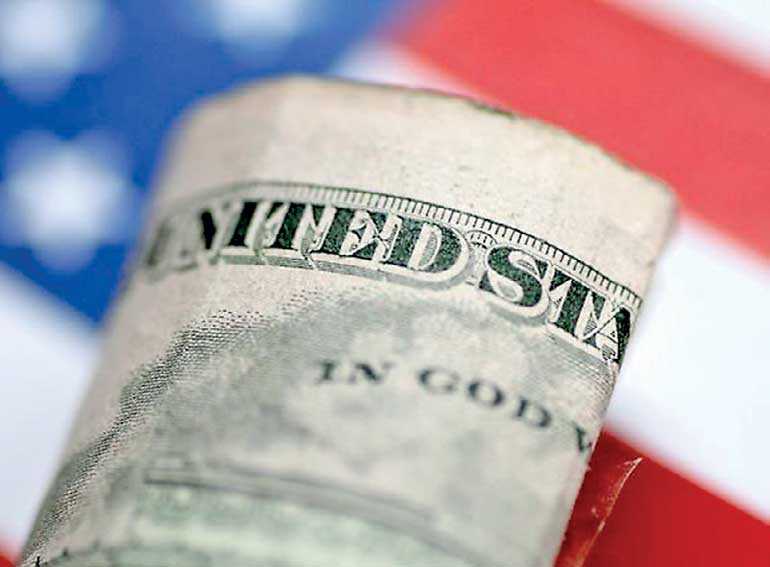Tuesday Apr 15, 2025
Tuesday Apr 15, 2025
Tuesday, 5 January 2021 01:51 - - {{hitsCtrl.values.hits}}

US five dollar note is seen in this illustration - Reuters
SINGAPORE (Reuters): The dollar started the new year by slipping broadly on Monday as investors sold it for just about everything else in the Asia session, wagering the world’s pandemic recovery will drive other currencies higher.
The euro, which had dipped on New Year’s Eve profit-taking, rose 0.3% to $1.2252. Sterling firmed to $1.3698, levels last seen in early 2018, and the Chinese yuan leapt 0.9% to a 30-month high of 6.4647 per dollar.
The safe-haven yen rose 0.3% to 102.94 per dollar, and looked to test resistance at 102.55, after Japan’s Prime Minister, Yoshihide Suga, said his government is mulling a state of emergency in Tokyo as infections rise.
The Australian and New Zealand dollars each gained about 0.3% to hold just below multi-year peaks.
“I think he market is still in this look-through mood,” said Bank of Singapore currency analyst Moh Siong Sim.
“People are looking through pockets of bad news, and the virus resurgence, because of a few things that are supportive,” he said, chiefly referring to the vaccine rollout but also mentioning U.S. stimulus and the Brexit trade deal.
Low U.S. interest rates, massive U.S. budget and trade deficits and a belief that rebounding world trade will drive non-dollar currencies higher have set the dollar on a downward course that has gathered pace as more investors piled in.
The dollar index posted its first annual loss since 2017 last year and has fallen roughly 13% from a three-year peak hit at the height of the pandemic panic in March.
It was last 0.08% weaker at 89.688 and not far above a more than 2-1/2 year low of 89.515 made last week.
Hangover
The softening dollar boosted commodity prices and pushed bitcoin as well as several Asian currencies to milestone highs. The Singapore dollar hit its highest since April 2018 on Monday after data the city-state’s growth shrinking by less than expected last year.
The rising yuan pulled the Malaysian ringgit and South Korean won to multi-year highs as well, while the Indonesian rupiah leapt more than 1% and cryptocurrencies found new peaks.
Bitcoin on Monday was a little off Sunday’s all-time top of $34,800 at $33,491. An enormous rally has carried it up 800% since March as institutional investors seem to have turned buyers. Gold was up 1% at a two-month high of $1,922.
Ahead on the radar, investors are focused on a runoff election in the U.S. state of Georgia on Tuesday which will determine control of the Senate.
Minutes of the Federal Reserve’s December meeting due on Wednesday should offer more detail on discussions about making their forward policy guidance more explicit and the chance of a further increase in asset buying this year.
The data calendar includes a raft of manufacturing surveys across the globe, which will show how industry is coping with the spread of the coronavirus, and the closely watched ISM surveys of U.S. factories and services.
Chinese factory activity continued to accelerate in December, though the PMI missed forecasts at 53.0.
“The global economy is closer to a more sustainable growth recovery amid unprecedented fiscal and monetary support,” Maybank currency analysts said in a note.
In this climate, they wrote, cyclical currencies such as the Aussie, kiwi and those of Asian exporters can benefit - with low global rates increasing the appeal of higher-yielders such as the rupiah, ringgit, rupee and yuan.
“On net...the dollar can see its weakness stay further entrenched.”